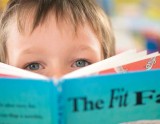Opportunities for APP in reading occur every day, says Ann Webley. It's just a matter of spotting them...
Many teachers feel much more concerned about using APP to assess reading than writing. I think this is probably because, even before APP, schools had assessment procedures for writing in place. Reading assessment, on the other hand, has tended to be less well organised and may have been restricted to benchmarking, comments made after guided reading sessions and the SATs paper at the end of the year.
However, there are numerous opportunities to assess reading against the assessment focuses (AFs), and these arise from the everyday work that goes on in the classroom. It is not necessary to organise anything special because the evidence will be there. It’s just a case of recognising it.
Reading is assessed using the following AFs:
• AF1: Use a range of strategies including accurate decoding of text, to read for meaning.
• AF2: Understand, describe, select or retrieve information, events or ideas from texts and use quotation and reference to text.
• AF3: Deduce, infer or interpret information, events or ideas from texts.
• AF4: Identify and comment on the structure and organisation of texts, including grammatical and presentational features at text level.
• AF5: Explain and comment on writer’s use of language, including grammatical and literary features at word and sentence level.
• AF6: Identify and comment on writer’s purposes and viewpoints and the overall effect of the text on the reader.
• AF7: Relate texts to their social, cultural and historic contexts and literary traditions.
As with writing, it is important to be aware of the links between strands 7 and 8 of the Primary Framework and the assessment focuses. For example:
| Year 2: | Draw together ideas and information from across a whole text, using simple signposts in the text | AF2 |
| Year 4: | Use knowledge of different organisational features of texts to find information effectively | AF4 |
| Year 6: | Recognise rhetorical devices used to argue, persuade, mislead and sway the reader | AF5 |
Some objectives in strand 8 cannot be matched to an AF. This is because they relate to on-going reading choices and behaviours, such as ‘Select books for personal reading and give reasons for choices.’ (year 1).
It is also important to bear in mind the relative importance of assessment focuses at different stages of reading:
AF1 & 2 are key indicators at level 2
AF2 & 3 are key indicators at level 3
AF3 is a key indicator at level 4. At level 4 and above, attainment of AF1 is assumed.
 In looking for evidence, APP draws on the full context of a pupil’s reading, whereas a test is only a sample. As with writing, the evidence can be collected both in literacy and across the curriculum.
In looking for evidence, APP draws on the full context of a pupil’s reading, whereas a test is only a sample. As with writing, the evidence can be collected both in literacy and across the curriculum.
As I suggested in the introduction, teachers are already planning many reading based activities which could easily be used for assessment where needed. For example:
| Reading activity | Links to AF |
|---|---|
| Retell a story | AF2 |
| Highlight the main points in a text | AF2 |
| Draw a feelings graph – how characters are feeling at different points of the story |
AF3 |
| Make predictions | AF3 |
| Reassemble extracts from a non-fiction text | AF4 |
| Highlight vocabulary choices | AF5 |
| Identify and highlight facts and opinions | AF6 |
| Talk about links between texts e.g. same characters, setting or presentational features | AF7 |
It is worth bearing in mind the possible advantages and disadvantages of collecting evidence in certain ways. For example:
• An oral presentation will give an individual response but is dependent upon experience and confidence, and can take time.
• Drama activities offer endless opportunities which are not dependent upon writing but are also highly dependent on both pupil and teacher experience.
• Reading journal responses are individual and very powerful but are dependent on the ability of the child to record ideas in writing and can, therefore, lead to some low level responses.
These points are not intended to make any kind of judgement about the different ways of responding to a text, but rather to make the point that a variety of responses are needed in order to overcome potential disadvantages for children.
I am not suggesting for a moment that every time there is a reading activity in class, you need to record against assessment focuses. This would be impossible and unnecessary. Rather, you need to be aware of what the children must do in order to progress and plan assessment opportunities for groups or the whole class as needed. The main point here is that you do not need to invent anything new in order to do this because the reading activities that happen in all classrooms can be used as evidence. These might occur in literacy, using texts specifically linked to literacy planning, or with texts linked to a creative curriculum.
Teachers question children about the texts they read (written and visual) all the time. The quality of the questioning and its relevance for what is being learnt becomes of prime importance when we consider a range of evidence. I will deal with this aspect in detail when I consider guided reading sessions in the next article.
 The ultimate aim is that children become independent and thoughtful readers. Therefore, teachers need to give them the opportunity to make choices about both what they read and how they respond. Being independent doesn’t mean the children have to work alone or succeed in a test. Some examples of children being ‘creative’ or ‘independent’ in their reading might include:
The ultimate aim is that children become independent and thoughtful readers. Therefore, teachers need to give them the opportunity to make choices about both what they read and how they respond. Being independent doesn’t mean the children have to work alone or succeed in a test. Some examples of children being ‘creative’ or ‘independent’ in their reading might include:
• Browsing and choosing in the library
• Becoming familiar with the work of a specific author
• Planning personal reading goals
• Talking about what they feel about what they have just read
• Exploring reasons for likes and dislikes in reading
• Trying out new types of books
These link very closely to aspects of strand 8 of the Primary Framework. Therefore, planning in opportunities for children to spend time with books will help address the need for independence and choice and add further to the sample of evidence needed to ‘build a picture’ of reading.
Emma rees, publisher at gl assessment, offers some useful tips for implementing app in reading…
Use a broad range of evidence
APP in reading is about understanding pupils better and gaining an insight into what they need to improve their skills. Use opportunities to gather evidence across the curriculum – reading history or science books, for example, or choosing books on topics that interest pupils.
Encourage creativity
Reading comprehension isn’t just about reading text on a page; it can be so much more interactive than that. Stimulating activities, such as role-play, drama, questioning, character analysis and summarising, offer a great deal of scope for gathering evidence. Encouraging pupils to spend more time with books will also allow you to add to the evidence base.
Enable pupils to understand how to improve
Research has shown that children who understand where they are in the learning process and know what they need to do to raise their attainment can often achieve more. This is a very sophisticated skill to acquire, but pupils benefit from mastering it during the Primary years. For more info, visit
http://www.gl-assessment.co.uk
In what will be the last article in this series, I will consider the fivepart guided reading session and look at how a tightly planned session will provide focused evidence for APP linked to specific assessment focuses.
Behaviour management: choosing the right words
Behaviour Management
Kindness is contagious - give your colleagues a boost by recognising their efforts
Ace-Classroom-Support
5 Ways To Celebrate World Book Day
Ace-Classroom-Support
